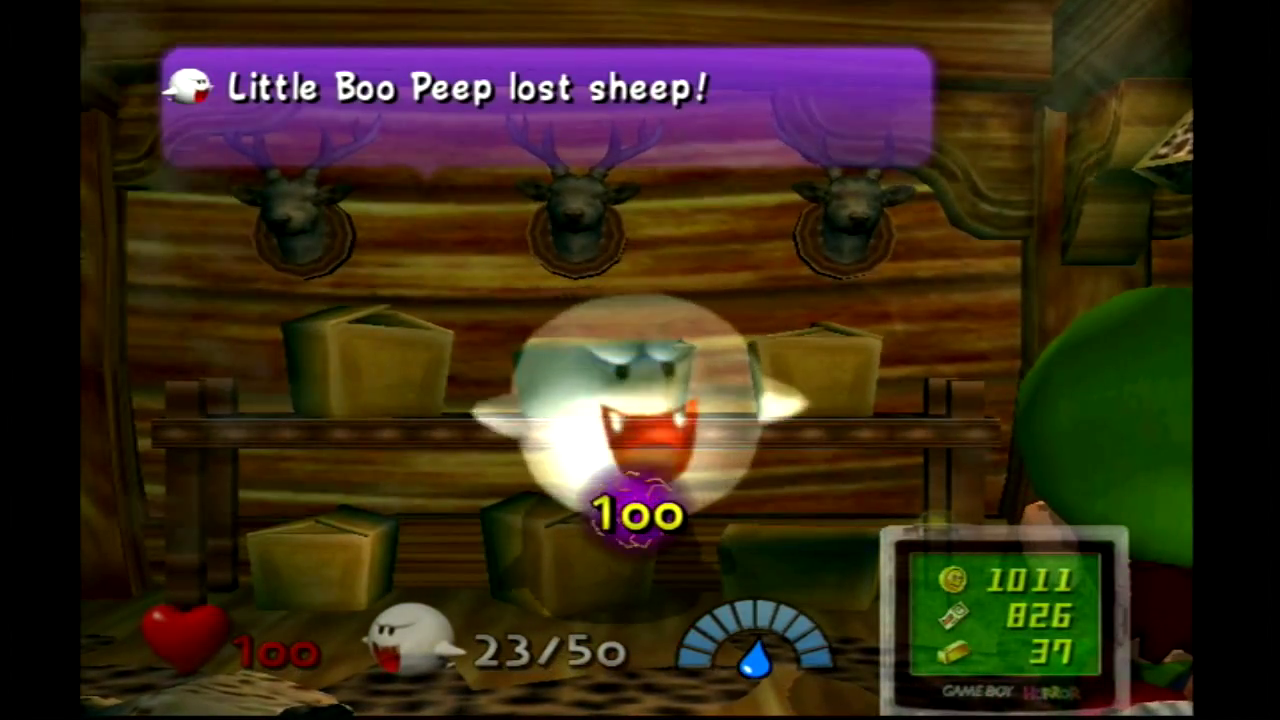I make it a point to play through Luigi’s Mansion at least once a year, usually around Halloween, and for many it has become a Gamecube staple that has to be in any good cube library. This was the first game to give Luigi a definitive personality and was used to help pioneer the creation of the Gamecube controller, but it wasn’t always so revered. Luigi’s Mansion was a launch title for the Gamecube, and was the only Mario game at launch. Prior to this, every Nintendo console had released alongside a major Super Mario game. Luigi’s Mansion was very strange and out of place, but ultimately its uniqueness is what has helped it become as recognized as it is.

What makes Luigi’s Mansion hold up so well after all this time is the mansion itself. The mansion is labyrinthine, full of hidden areas and secrets. Almost everything can be interacted with and is carefully arranged. Every room has a purpose and the exploration feels fluid and logical, even when you’re discovering something that wouldn’t quite make sense in the real world. This environment has more personality than a lot of main protagonists these days. It has a theme, and it sticks to it, drawing you in and making even the oddest things in the game believable in context.

The story of Luigi’s Mansion is pretty bare-bones, but it is functional. Luigi wins a mansion in a contest he didn’t enter, heads out to meet his brother Mario as his new digs, and it turns out to be infested with spoopy ghosts (I’ve waited years of my life to use “spoopy” in a journalistic format, I’m not going to lie). Luigi acquires a vacuum called the Poltergust from a scientist named E.Gadd and sets out to clean up the mansion on specters. You’ve likely noticed the reference to Ghostbusters with the vacuum “weapon”, but did you also notice the mansion setting’s similarity to Resident Evil? Luigi even opened the doors in a similar fashion to Resident Evil load screens. It has never been officially confirmed, but I think this was done as a nod to Nintendo’s acquirement of the Resident Evil franchise at the time.

The mansion is inhabited not only by run-of-the-mill ghosts, but also “portrait ghosts”. These ghosts are unique and serve as the game’s bosses. Originally collected by E.Gadd , they must be captured and returned to their oil painting origins. With the exception of the main bosses, the majority of portrait ghosts will not harm Luigi. They simply exist, and you must figure out puzzles to make them vulnerable to the poltergust. About halfway through the game, Luigi also accidentally releases boos into the mansion. There is 1 boo for each room in the mansion, each with a unique name. Boos are challenging in that they are not effected by the pull of the vacuum, making capturing them more difficult. To capture most ghosts, you must begin attempting to suck them in, and wrestle control with the analog stick. The physics work really well, and it can feel like stronger ghosts are truly putting up a fight.

Luigi’s Mansion‘s graphics do show signs of aging in the form of some muddy textures, but overall the game still looks fantastic today. The lighting effects are some of the best on the system, and the atmosphere is permeating. Luigi’s Mansion is a treat with high replay value that is aging like wine. The game received an alright critical reception at launch, but its quirkiness ultimately contributed to it becoming a sort of cult classic. As with many Gamecube titles, the price is on the rise in the collectors market, but for now, it’s still quite affordable.
Normally in my retrospectives, I go through the entire game, and spoil every little thing I can in the name of nostalgia. Luigi’s Mansion, despite being a very short game that can be completed in an afternoon, has too much content for me to do this is a timely fashion. There’s so many little things, and to cover every portrait ghost would just look like a mess. But fear not, it is only the 12th of Halloween! I will be doing one more retrospective this month, and will be sticking true to my normal retrospective format. It’s gonna get pretty spoopy…

